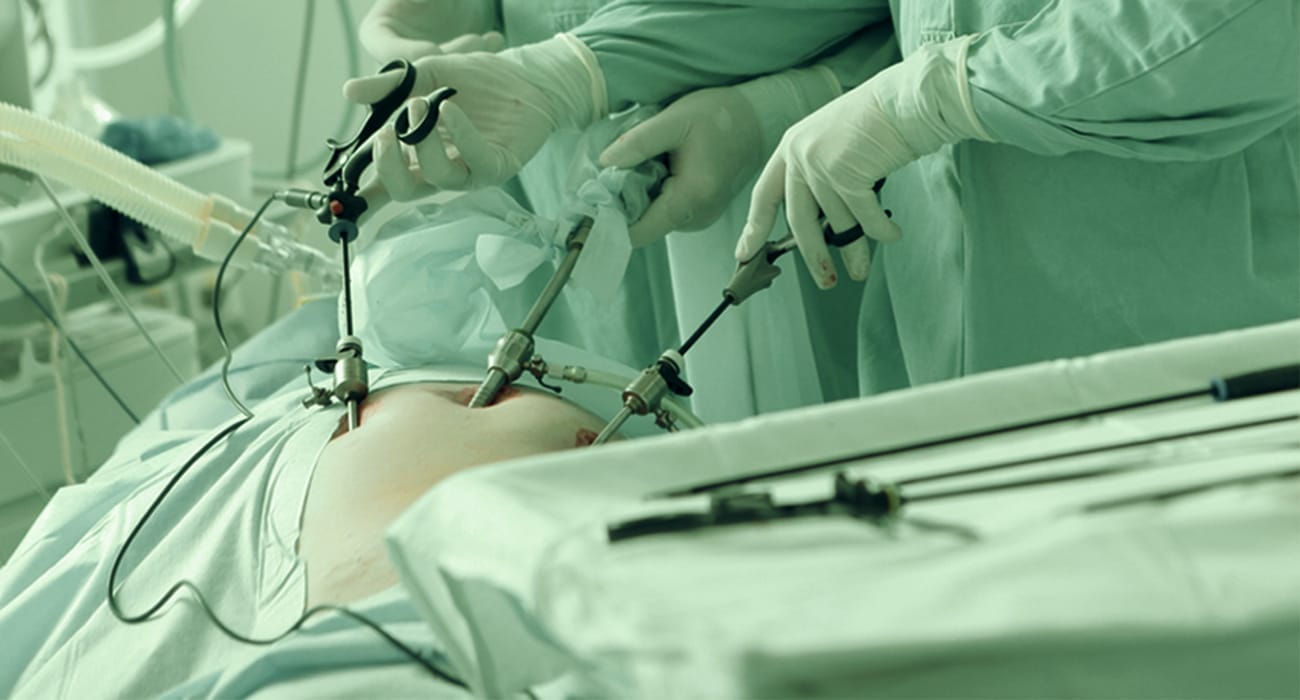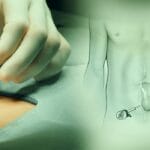Learn what to expect when visiting the Emergency Department. Learn More

Laparoscopic (keyhole) surgery is a minimally invasive technique that allows surgeons to operate through tiny incisions using a camera (laparoscope) and specialized instruments. Compared to traditional open surgery, it typically offers less pain, smaller scars, faster recovery, and shorter hospital stays without compromising surgical outcomes for appropriately selected conditions.
How Laparoscopic Surgery Works
- Tiny Incisions (usually 0.5–1 cm) are made in the abdomen.
- Carbon dioxide gas gently inflates the area to create working space.
- A laparoscope (camera) provides a magnified, high-definition view.
- Specialized instruments perform the procedure through additional small ports.
- At the end, gas is released, instruments are removed, and incisions are closed with sutures or skin glue.
Why Choose Dhanashree Hospital for Laparoscopic Surgery
Experienced specialist with advanced minimally invasive expertise
Evidence-based protocols (pain control, early mobility, infection prevention)
Modern OT infrastructure with high-definition imaging
Team-based care including anesthesia, nursing, physiotherapy, dietetics
Patient-first approach with clear communication and follow-up support
Common Conditions Treated with Laparoscopy
Gallbladder: Gallstones, cholecystitis (laparoscopic cholecystectomy)
Appendix: Appendicitis (laparoscopic appendectomy)
Hernias: Inguinal, umbilical, incisional (TEP/TAPP, IPOM, etc.)
Gastrointestinal: Reflux disease, hiatus hernia, bowel resections (select cases)
Gynecologic (when applicable): Ovarian cysts, endometriosis, fibroids, ectopic pregnancy
Bariatric/Metabolic: Sleeve gastrectomy, gastric bypass (for weight-loss and related conditions)
Benefits of Laparoscopic Surgery
Smaller incisions and reduced scarring
Less postoperative pain and reduced
Shorter hospital stay (often same-day or 24 to 48 hours, depending on procedure)
Faster return to normal activities and work
Lower risk of wound infection and incisional hernia compared to larger open cuts
Improved visualization with magnified view for precise dissection
Preparing for Your Surgery
1 to 2 weeks prior:
- Medical evaluation, blood tests, imaging as needed
- Review of medications (especially blood thinners, diabetes meds)
- Stop smoking, reduce alcohol, optimize nutrition and hydration
1 to 2 days prior:
- Follow pre-op diet or bowel prep if instructed
- Arrange a responsible adult for drop-off, pick-up and first 24 hours
Night before and day of surgery:
- Fasting as advised (usually 6 to 8 hours for solids, clear liquids up to 2 hours as per anesthetist)
- Shower, avoid makeup or lotions, remove jewellery
- Bring medical records, previous reports, and medication list
Recovery Timeline
First 24 to 48 hours
- Mild to moderate discomfort, controlled with prescribed analgesics
- Shoulder-tip pain or bloating may occur, walking helps
- Start with clear liquids, then light diet as tolerated (unless advised otherwise)
Days 3 to 7
- Gradual return to routine activities at home
- Keep incisions clean and dry, shower usually allowed (pat dry)
- Avoid lifting more than 5 to 7 kg, no strenuous exercise
Weeks 2 to 4
- Most patients resume desk work within 7 to 14 days depending on procedure
- Light exercise like walking is encouraged, avoid heavy lifting until cleared
Weeks 4 to 6 and beyond
- Progressive return to full activity, gym, or sports after surgeon’s approval.
Incision and Wound Care
- Keep dressings as instructed, watch for redness, swelling, discharge, or fever
- Do not scrub or soak wounds (no baths or swimming) until cleared
- Stitches may be absorbable, if not, we’ll schedule removal
Pain, Nausea and Bloating
Take pain medicines as prescribed, do not wait for severe pain
Early ambulation (walking) reduces gas-related discomfort and lowers clot risk
Report persistent vomiting, severe abdominal pain, or inability to pass gas or stool
Diet and Hydration
Start with liquids, then soft foods, then normal diet as tolerated
Emphasize protein and fibre for healing and bowel regularity
For gallbladder surgery, a temporary low-fat diet may reduce discomfort
Stay well hydrated, limit carbonated or very fatty foods early on
When to Seek Urgent Care
High fever (more than 38°C), chills
Increasing redness, swelling, pus at incisionsPersistent vomiting, severe abdominal pain, or distension
Chest pain, sudden shortness of breath, calf pain or swelling (clot warning)
Jaundice (yellowing eyes or skin) after gallbladder or bile duct procedures
Book Your Next Step
Not sure whether laparoscopic surgery is right for you?
Interact for a Consultation and connect with our specialist to discuss your diagnosis, options, and recovery plan.

